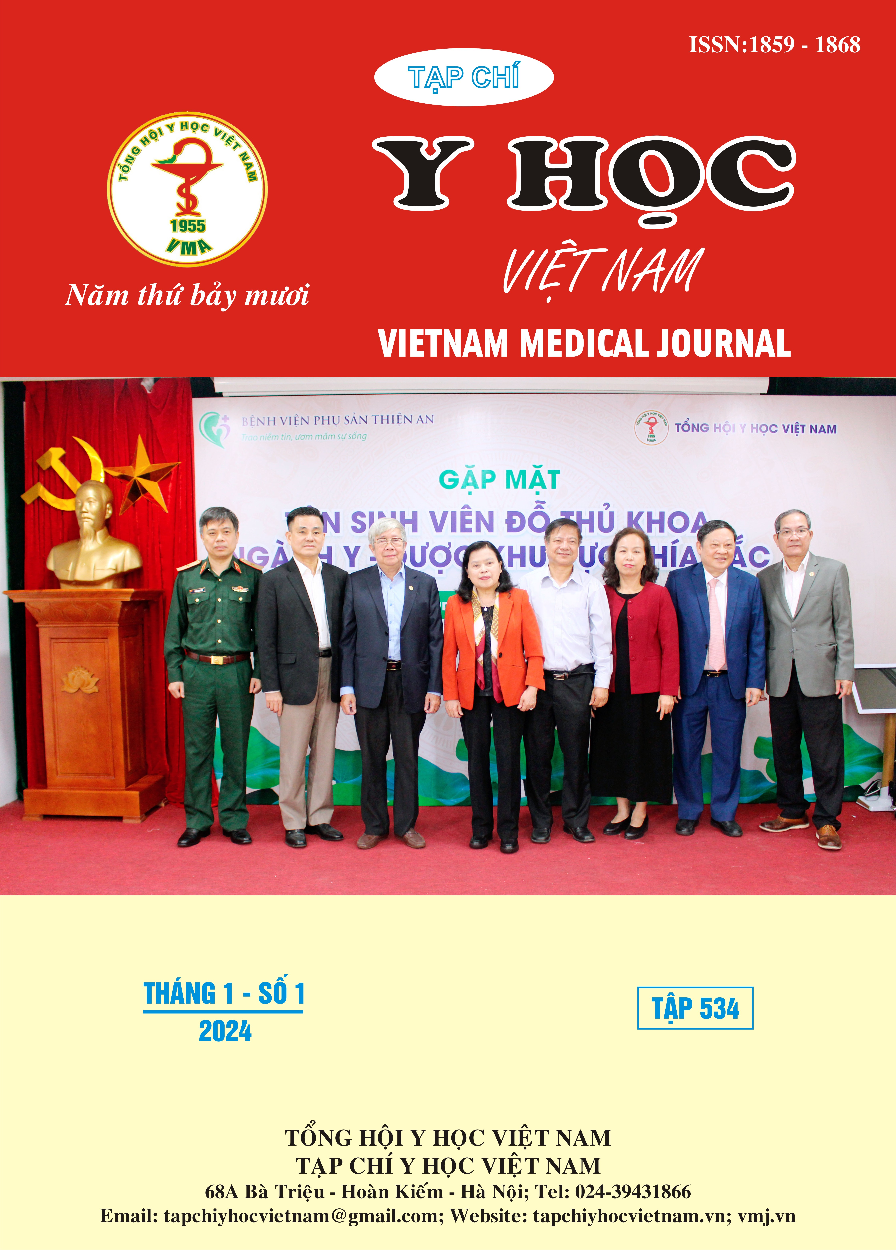TWO CASES OF UMBILICAL CORD KNOTS WERE PERFORMED BY CESAREAN SECTION AT THE NATIONAL HOSPITAL OBSTETRICS AND GYNECOLOGY IN 1023
Main Article Content
Abstract
Umbilical cord knots are a rare occurrence but can danger to the fetus such as intrauterine death and fetal distress or asphyxia in labor. At the Department of Delivery of the national obstetrics and gynecology have recorded some cases of knotted umbilical cord during pregnancy and after delivery. Case report: We describe two new cases of umbilical cord knots with the aim to find the risk factors for contributing diagnosis and treatment. The first case is diagnosised by untrasound 4D in pregnancy and the second case is diagnosised after cesarean section. Two women have history of multiple vaginal births. After birth, both two newborns are wealth. Overseas studies have recorded that all reasons causing the excessive uterine volume can be the cause of umbilical cord knots because they due to the fetus moving too freely in the uterus such as: polyhydramnios, multiparous women, gestational diabetes… Umbilical cord knots cause many complications for fetus such as: fetal distress, intrauterine growth restriction, fetal hypoxia. Conclusion: For purpose of study the risk factors which cause to umbilical cord knots, how to diagnosis and how to manage during pregnancy. We report two cases of umbilical cord knots are diagnosed in pregnancy and after cesarean section.
Article Details
References
2. Guzikowski, W.; Kowalczyk, D.; Wi˛ecek, J. Diagnosis of true umbilical cord knot. Arch. Med Sci. 2014, 10, 91–95. [CrossRef][PubMed]
3. Bohiltea, R.E.; Varlas, V.N.; Dima, V.; Iordache, A.M.; Salmen, T.; Mihai, B.M.; Bohiltea, A.T.; Vladareanu, E.M.; Ducu, I.; Grigoriu,C. The Strategy against Iatrogenic Prematurity Due to True Umbilical Knot: From Prenatal Diagnosis Challenges to the Favorable Fetal Outcome. J. Clin. Med. 2022, 11, 818. [CrossRef] [PubMed].
4. Nappi, L.; Trezza, F.; Bufo, P.; Riezzo, I.; Turillazzi, E.; Borghi, C.;Bonaccorsi, G.; Scutiero, G.; Fineschi, V.; Greco, P. Classification of stillbirths is an ongoing dilemma. J. Périnat. Med. 2016, 44, 837–843. [CrossRef]
5. Massa, G.; Stabile, G.; Romano, F.; Balduit, A.; Mangogna, A.; Belmonte, B.; Canu, P.; Bertucci, E.; Ricci, G.; Salviato, T. CD133 Expression in Placenta Chorioangioma Presenting as a Giant Asymptomatic Mass. Medicina 2021, 57, 162. [CrossRef].
6. Zbeidy, R.; Souki, F.G. One long umbilical cord, four nuchal cord loops and a true knot. BMJ Case Rep. 2017, 2017, bcr2017223241.[CrossRef].
7. López, R.; Cajal, C.; Ocampo, M. Prenatal diagnosis of true knot of the umbilical cord. Ultrasound Obstet. Gynecol. 2004, 23, 99–100.[CrossRef]
8. Kong, C.W.; Chan, L.W.; To, W.W. Neonatal outcome and mode of delivery in the presence of nuchal cord loops: Implications on patient counselling and the mode of delivery. Arch. Gynecol. Obstet. 2015, 292, 283–289. [CrossRef] [PubMed]
9. Hayes, D.J.L.; Warland, J.; Parast, M.M.; Bendon, R.W.; Hasegawa, J.; Banks, J.; Clapham, L.; Heazell, A.E.P. Umbilical cord characteristics and theirassociation with adverse pregnancy outcomes: A systematic review and meta-analysis. PLoS ONE 2020,15, e0239630. [CrossRef] [PubMed
10. Sherer, D.M.; Amoabeng, O.; Dryer, A.M.; Dalloul, M. Current Perspectives of Prenatal Sonographic Diagnosis and Clinical Management Challenges of True Knot of the Umbilical Cord. Int. J. Women Health 2020, 12, 221–233. [CrossRef]


